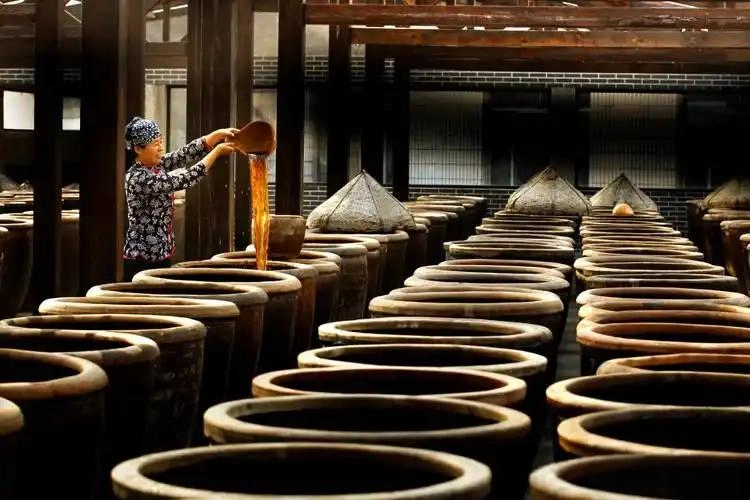The Art of Baoning Vinegar from Langzhong, Nanchong, Sichuan: A Culinary Journey
Introduction:
As a food connoisseur, I have always been fascinated by the subtle nuances that different ingredients bring to the table. Among these, vinegar stands out as a versatile and impactful flavor enhancer. Today, I would like to share with you the story of Baoning Vinegar from Langzhong, a city in the heart of Sichuan’s Nanchong, which is not just a condiment but a cultural emblem and a culinary masterpiece.
Origin and Cultural Background:
Baoning Vinegar, known as one of the Four Great Vinegars of China, has a history that dates back to the Han Dynasty, over 2000 years ago. It is deeply rooted in the rich culinary traditions of Sichuan, a region famous for its spicy cuisine. The production of Baoning Vinegar is not just an industrial process but a time-honored craft passed down through generations, reflecting the region’s heritage and commitment to quality.
Ingredients and Production:
The making of Baoning Vinegar is a meticulous process that involves solid-state fermentation for a minimum of three years. The primary ingredients include locally sourced glutinous rice, wheat, and a unique blend of over 100 types of medicinal herbs and spices. These ingredients are carefully selected for their ability to impart a complex flavor profile and health benefits. The fermentation process is controlled and monitored to ensure that the vinegar develops a rich, mellow, and slightly sweet taste that is characteristic of Baoning Vinegar.
Taste and Appearance:
Baoning Vinegar is known for its dark brown color, reminiscent of aged balsamic vinegar, but with a distinct aroma and flavor. The taste is a harmonious balance of sourness, sweetness, and a hint of spice, which is neither too overpowering nor too mild. The appearance is clear and glossy, with a viscosity that is slightly thicker than regular vinegar, indicating the depth of its fermentation process.
Representative Dishes and Culinary Uses:
Baoning Vinegar is a key ingredient in many traditional Sichuan dishes, enhancing their flavors without overpowering them. It is used in the preparation of classic dishes such as Mapo Tofu, Fish-Flavored Pork, and Hot and Sour Soup. Its versatility also extends to non-Sichuan cuisine, where it can be used in salad dressings, marinades, and as a glaze for meats and vegetables.
Culinary Characteristics:
The unique characteristics of Baoning Vinegar are its depth of flavor, health benefits, and the ability to complement a wide range of dishes. The long fermentation process results in a vinegar that is rich in amino acids and vitamins, making it not only a flavor enhancer but also a nutritious addition to any meal. Its mellow sourness and subtle sweetness make it a preferred choice for chefs looking to add complexity to their dishes without altering the natural taste of the ingredients.
Conclusion:
Baoning Vinegar from Langzhong is more than just a condiment; it is a testament to the culinary artistry and cultural heritage of Sichuan. Its unique production process, rich history, and the ability to elevate dishes to new heights make it an indispensable part of Chinese cuisine and a treasured ingredient in the eyes of food professionals worldwide. As you incorporate Baoning Vinegar into your culinary creations, you are not just adding flavor but also a piece of China’s vibrant culinary legacy.
